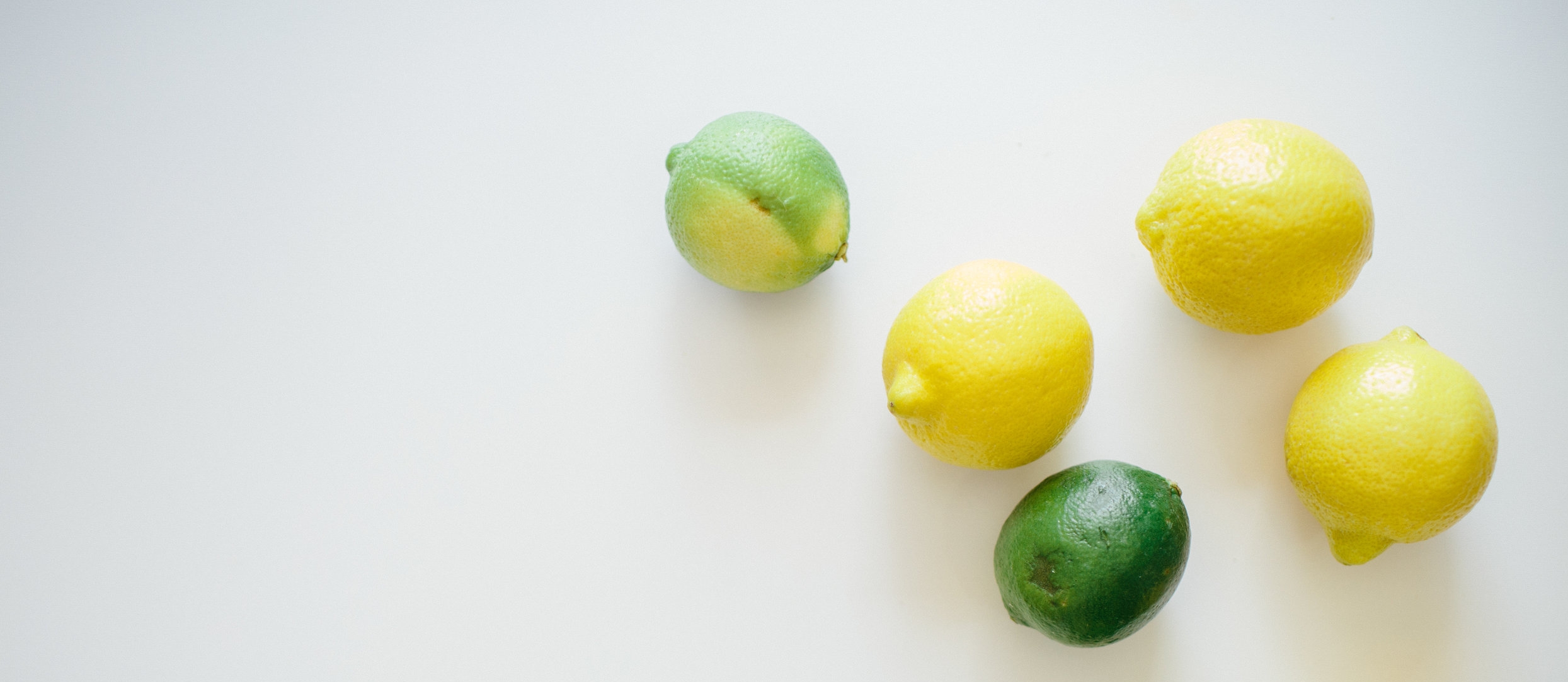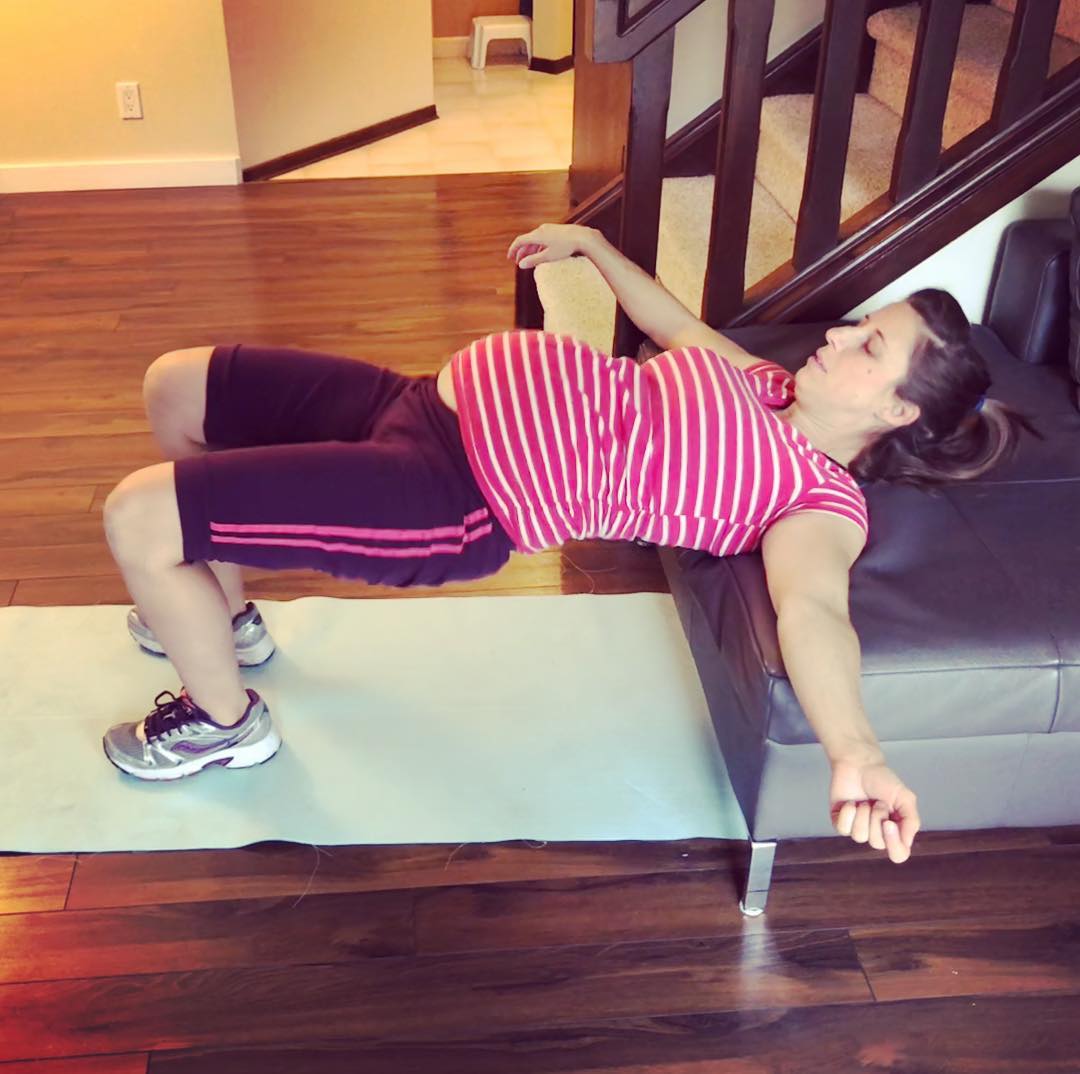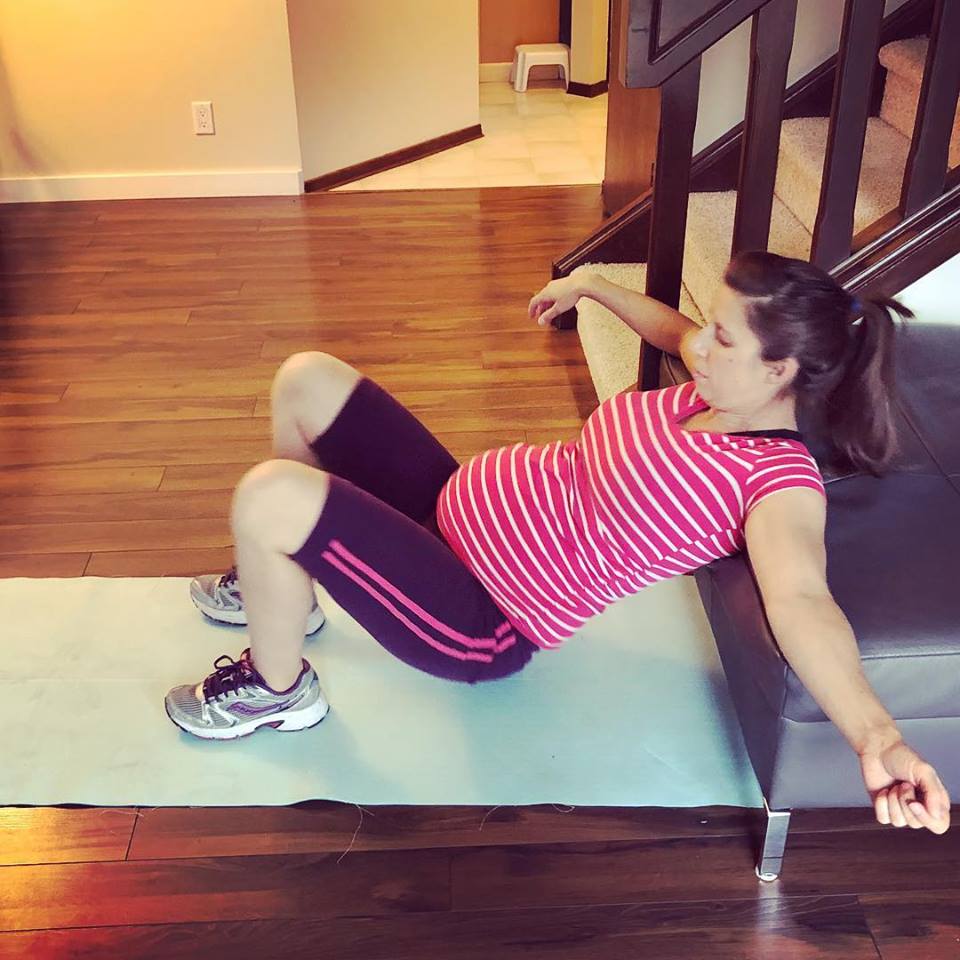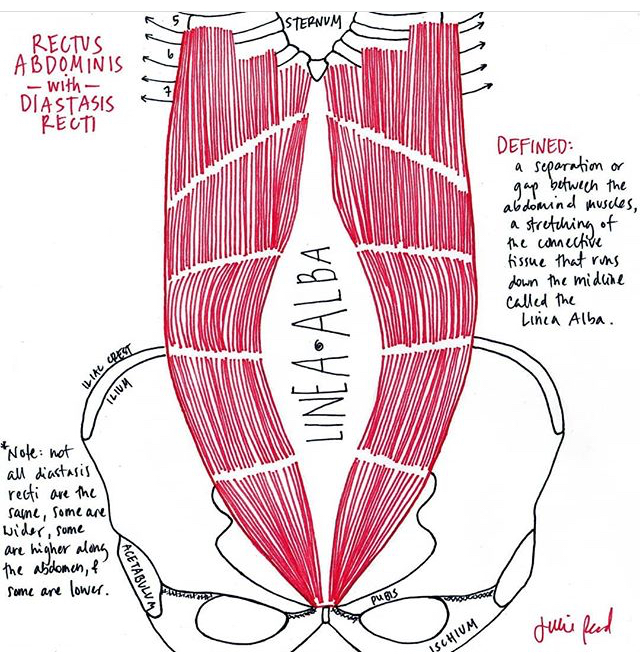
THE BARBELL BLOG
A solid resource squeezing out the facts
Can I lie on my back during pregnancy?
Eleven years ago when I was pregnant, I was told not to lie on my back.
“Don’t sleep on your back!”
“Don’t exercise on your back!”
“Don’t lie on your back!”
Well times they are a changing’.
Eleven years ago when I was pregnant, I was told not to lie on my back.
“Don’t sleep on your back!”
“Don’t exercise on your back!”
“Don’t lie on your back!”
Well times they are a changin’.
In the past it was thought the baby could press on and block the moms vena cava (vein that carries blood from lower body to the heart). So lying on your back for long periods of time was not recommended.
However more recent research suggests that as long as you feel ok, you and the baby are probably ok. That is, if there is no nausea, light-headedness, discomfort, tingling in legs, or breathlessness, you can continue in that position.
But if you start to feel those symptoms (which may be more common in the third trimester) then it’s time to probably use an incline or just avoid the supine position when you can.
If you're not feeling great lying on your back for a bridge. Lift it up a level to a hip thrust.
This exercise is great for the gluts, but also activates the core. Tie in your core-connection breath and you've got a fantastic prenatal exercise. Inhale as you lower and exhale as you lift.
Hook your shoulder blades on to the edge of a bench (or couch!). You can have your arms straight out or put your hands behind your head.
Keep a straight line with your back. Try not to overextend or arch your back.
Strengthening your gluts during pregnancy is a great way to support your pelvic floor. It can also help with those aches and pains through the hips and lower back.
Feeling good? Try a hip thrust hold.
While your hips are raised and your back is flat, hold the position. Be sure to breathe!!
Check into how you’re feeling and modify as needed!
How Prenatal Yoga Can Improve your Pregnancy
Prenatal Yoga creates a sense of calm, relieves stress and provides an opportunity to connect to your body and your baby through movement and breath. Read more about why you should be adding yoga to your pregnancy routine here...
My friend Sinead, owner of Kula Mama Yoga writes about why prenatal yoga can improve your pregnancy. She is a mom of 3 boys, a yoga instructor and a pre and postnatal specialist.
Yoga; is it me or is it everywhere right now? Yoga Studios seem to be popping up all over the place, we are in the midst of an explosion in the Yoga industry and there seem to be classes for every walk of life; Yoga for Kids/Teens, Seniors, First Responders, Stroke Patients, Hot Yoga, Warm Yoga, Cold Yoga (well maybe not yet but soon, I’m sure!), Yoga Therapy for Healing…and most importantly (to myself at least!) Prenatal Yoga, Fertility Yoga and Postnatal Yoga. So why all the fuss? What makes Yoga so universally accessible and a cure-all for everyone? Read on and I’ll try to enlighten you!
Yoga is adaptable to all body types, abilities and energy levels and has numerous medical benefits which are increasingly being proven in clinical trials. One of the key components in Yoga is the ability to control your breath and turn your sight inwards as you move through your poses, which has a calming and restorative impact on the mind and body. Reducing stress levels is often a key factor in tackling health issues and so Yoga can tie into that. By gently and mindfully moving into postures and focusing on correct alignment, we can improve posture, flexibility and strength and the additional release of endorphins, our ‘feel good’ hormones, means we can leave class feeling awesome. Add in a lovely relaxation at the end of class and what's not to love?!
Why Prenatal Yoga?
Prenatal Yoga creates a sense of calm, relieves stress and provides an opportunity to connect to your body and your baby through movement and breath. Studies have proven that an integrated approach to Yoga - postures, breathing and meditation combined - can improve birth outcomes such as higher birth weight, lower risk of pre-eclampsia and reduced blood pressure. Midwives can usually tell if a Mom has taken Yoga classes due to her breath work and labour postures. Prenatal Yoga reduces stress levels, provides an environment of safety for Moms to talk and connect about their concerns, experiences and joys of pregnancy and most importantly it forms those early motherhood friendships which become vital further down the line in creating support networks and alleviating isolation in new Moms.
Prenatal Yoga instructors work within a body of knowledge around pregnancy-related ailments so that the poses are safe, mindful and will strengthen Mom without creating any additional stress in the body, whilst relieving some of the more common aches and pains of pregnancy. You will also learn breathing techniques for labour and for safe movement of the pelvic floor, which will also aid in your postnatal recovery. And some of the poses can help during labour and can even help to reposition a breech baby!
Trimester by Trimester guide to Prenatal Yoga:
During the first trimester, prenatal yoga can help to energize the body with a gentle workout that can relieve lethargy and help reduce feelings of nausea through breathing exercises.
In the second trimester, energy typically increases and we use prenatal yoga help to safely work into the areas of stiffness in the body, as your body grows and changes and natural movement patterns become restricted. We work on opening the hips, stretching the side body, improving core strength safely without using the intra-abdominals, strengthening the thighs and legs to improve balance, relieving tension on the pelvic floor and focusing on the breath to encourage healthy movement of the pelvic floor.
In the third trimester, we continue to stretch any areas of stiffness in the body; we work on squatting postures and we learn some tools for labour - using poses such as toe stretches to demonstrate how the breath can help us work through moments of intensity. We will work in poses that can help to relieve pain in labour, and some that Mom can come back to post labour to relieve aching shoulders, to open the chest, and to gently stretch the legs. In the third trimester we also focus on meditation to overcome physical intensity, and to find inner calm and peace as well as connecting to baby and the breath.
Not Just a Great Stretch
Prenatal Yoga can help with edema, low back pain, gestational hypertension, improved birth weight, carpal tunnel syndrome, pelvic discomfort, rib discomfort, pressure on pelvic floor, muscular stiffness, heartburn, constipation, sciatica and morning sickness. It can improve balance as body weight distribution shifts, teach methods of breathing that enable correct movement of the pelvic floor muscle in preparation for birth and post-birth repair, decrease stress, improve sleep, and give an essential time out from the stresses and strains of daily life in pregnancy - a session just for mom and baby, of calmness, peace and tranquility through flowing movement.
Prenatal Yoga 101
Choosing the right class - any qualified Yoga instructor can teach a Prenatal Yoga class, but only those with an 85-hour Pre and Post-natal qualification can teach a class with all the correct knowledge of risks and alignment in pregnancy, so seek an instructor with the RPYT 85-Hour Certification.
Online classes - exercise caution if you’re trying online free classes online and seek out a Pre or Post natal fitness specialist. If a yoga instructor is a very practised Yogi then the poses might be too strenuous and it can become risky. Listen to your body and obey it’s limitations, and if you are in any doubt then perhaps try an in-person class where your instructor can modify poses for you and keep an eye on any risk factors.
What time of day is best? - choose a class that works for your time of day - if you are exhausted after work, try and find a weekend session that works for your schedule so you can get the most our of the class. As much as the class should be restful, you don’t want to fall sleep after a long day at work!
What to expect - most instructors will include a number of different props - blocks, bolsters or pillows, straps, and blankets are common props to ensure Mom reaches her ultimate comfort level!
Can beginners do Prenatal Yoga? Absolutely - most ladies coming to Prenatal Yoga are Yoga beginners so this is never an issue. this is where many ladies find their first connection to Yoga, as Prenatal is such an addictive session.
Will I have to work hard and get sweaty? No, Prenatal classes should not be strenuous - the poses are modified and gentle; while you might feel some post-class stretching in your legs or or hips you should not be exerting yourself or moving too quickly.
Sinead O’Connor is a Yoga Instructor RYT-200, RPYT-85 Hour working and living in SE Calgary, and the owner of Kula Mama Yoga.
Diastasis Recti. The Good, the Bad and the Not So Ugly.
Read more about Diastasis Recti. What is it? How to check for it? What to do about it?
Diastasis Rectus Abdominus
What is it?
We have muscles down the middle of our abdomen, called the Rectus Abdominus Muscles. (or sometimes referred to as the 6 pack muscles). In between those muscles, we have connective tissue called Linea Alba. This tissue runs down the middle from your sternum to your pelvis. It stretches when we are pregnant and allows our abdominal wall to grow with our baby. The gap in between the muscles is referred to as Diastasis Rectus Abdominus.
THIS. IS. AMAZING.
Our bodies change and MAKE ROOM for the tiny human we are growing inside of us.
INCREDIBLE.
No need to fear it because during pregnancy it is TOTALLY NORMAL.
NORMAL.
You didn't do anything wrong.
Your body is adapting to fit your baby.
EXTRAORDINARY.
MOST pregnant women will have Diastasis Recti in the last month of pregnancy (and most likely before that)
Julie Read shows us Rectus Abdominus (above) and Rectus Abdominus with Diastasis Recti (below). You can see more of Julie Read's work here.
The majority of bodies will heal on their own postpartum, but some may need some extra help. A Diastasis Recti is when you have a gap of 2 fingers or more in between the rectus abdominus muscles. However, the distance of the gap is not necessarily the issue. What you need to be more concerned with is the tension of the linea alba - the connective tissue. It's important to have strong tension in this tissue. This will give you better core function.
Sometimes the gap may never close, but if the tension is strong, that's OK.
How can you check?
There are 3 places to check. Above the belly button, at the belly button and below the belly button.
Lie on your back with your knees bent and your feet flat on the floor. Relax your head and shoulders and place your fingers, with your palm facing towards you, at the belly button.
Lift your head and neck just off the floor (not a crunch), exhale, and press with your fingertips. You may feel the two sides of the rectus abdomens come together to hug your fingertips. The gap that you may feel is the Diastasis Recti.
Now check above the belly button and then below the belly button. (approximately 3 fingers above and below.)
Now feel the tension. You shouldn't be able to sink your hand deep into the abdomen. The goal is to have strong tension in the linea-alba, similar to what a stiff trampoline feels like.
What can you do about it?
- First of all, sleep and rest! If you are a new mom, you NEED sleep and rest. Your body needs time to heal. And sleep and rest are a big part of that healing process.
- See a Pelvic Floor Physio therapist. She can check to see if there is Diastasis Recti and also check you for other pelvic floor dysfunctions.
- Check your alignment. Get your ribs over your hips. You don't have to be in perfect alignment all the time. But it's something to keep in check because when you're not in correct alignment the intra abdominal pressure will affect the Diastasis Recti.
- Breathe. If you find yourself holding your breath when you are exercising or lifting your baby, or when you are doing any activity... BREATHE! Learn more about the core-connection breath here. And stop holding your breath!
Good alignment and breathing will help you control the intra abdominal pressure. Now, if you get all of these in line, and you can perform some simple base exercises with correct strategy, then it's time for a challenge.
If you can't breathe properly, or if you have doming or bulging you need to change it up. But if you can manage the tension and the intra-abdominal pressure with the breathing, then you can add resistance and change things up.
Until then, you may need to stay away from crunches, planks, situps and the 'traditional' core exercises.
And if you see an advertisement saying DO THIS ONE EXERCISE TO HEAL YOUR DIASTASIS AND GET RID OF YOUR MUMMY TUMMY, please ignore it, delete it (hell, even report it!) and move along.
There is no such thing as ONE EXERCISE that will heal EVERYONE'S Diastasis.
Nope.
Not possible.
Cause every body is a different body.











